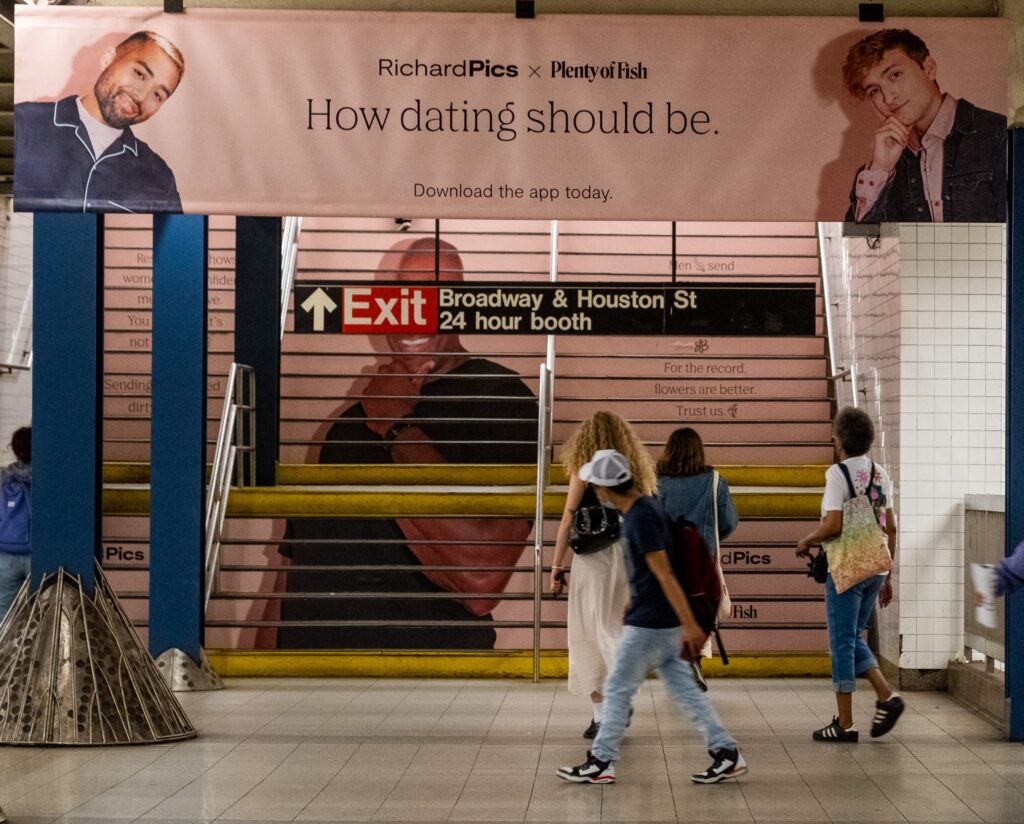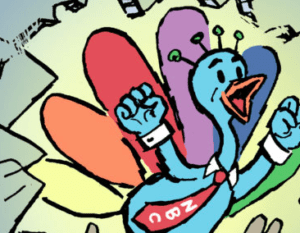Plenty of Fish swam into the now-teeming sea of online dating services when the category was little more than a puddle.
As an early online dating brand, the Match Group-owned company, founded in 2003 in Vancouver, Canada, has had to stay on its toes (or fins) to remain relevant.
Over the years, Plenty of Fish has evolved from website only to iOS and Android apps and other channels like in-app video calls, voice memos and livestreaming.
Recently, based on research showing a shift in its user base’s age range, “we’re definitely trying to age down to a certain point” by targeting daters in the 25-35 age range, said Mitra Shad, global director of brand marketing.
To better target younger users, “we found that we needed to do a better job of honing in on who we are as a brand and claiming a stake in the ground,” Shad said.
For instance, Plenty of Fish wants to get the word out that it became the first dating app to block face filters for all profile pictures in 2019. That year, the brand’s customer care team went through all the photos on the app and manually removed any with filters. Moderators still remove heavily edited profile images, per the community guidelines.
One metric Plenty of Fish is tracking and trying to improve among Gen Z and millennial daters is “unaided awareness,” Shad said, or the percentage of respondents who are aware of a brand without direct paid media prompting.
Friendly waters
Plenty of Fish is trying to establish itself as a relatively genuine, low-stress dating service, in a category that’s become insincere and stressful, according to Shad.
That’s why Plenty of Fish did a full rebrand last October.
The company also debuted an in-app dating game, Cue’d Up, that groups up to six users “in a little breakout room,” Shad said. Prewritten fill-in-the-blank or question cues pop up, and users quickly answer them, react to other people’s answers and “like” their fellow users. At the end of the game, users with mutual likes can connect.
Plenty of firsts
For the rebrand campaign, Plenty of Fish dedicated 60% of its online media spend to paid social (including influencer marketing), Google’s in-app ad network and YouTube advertising.
The other 40% of Plenty of Fish’s rebrand budget went to CTV in an effort to raise overall brand awareness and improve the performance metrics over the course of the year. Plenty of Fish works with a TV ad platform, Tatari, to curate its CTV supply.
CTV comprises 90% of Plenty of Fish’s TV budget, so there is a slice of linear TV as well. CTV is preferred because it’s more trackable than linear, so it can be effectively attributed and thus justify more spend, according to Shad. Although the rebrand campaign marked the first time Plenty of Fish tried linear TV.
The brand also made “our first big stab at out of home,” Shad said. For the first time, Plenty of Fish dabbled in offline media, going big primarily in New York and Texas.
In Texas markets, the brand ran digital out-of-home ads in bars, restaurants, gyms, elevator TVs and taxis. In New York City, Plenty of Fish placed signage on turnstiles, stairways and digital screens inside a subway station, with a pop-up gift shop truck and giveaways stationed outside.
As a result of the first phase of the campaign, focused on the big screen on the wall, Plenty of Fish more than doubled its engagement across all platforms, Shad said.
The higher awareness rate and improved brand sentiment around the notion of a healthier dating app, in terms of mind and body, led to week-over-week gains in app installs and lowered the cost per registration, Shad said.
Going forward, Plenty of Fish hopes its users will connect in ways that feel less fraught by reducing “terrible online dating behavior,” Shad said. “[Let’s] all try to be better humans when we’re doing anything on dating apps.”














